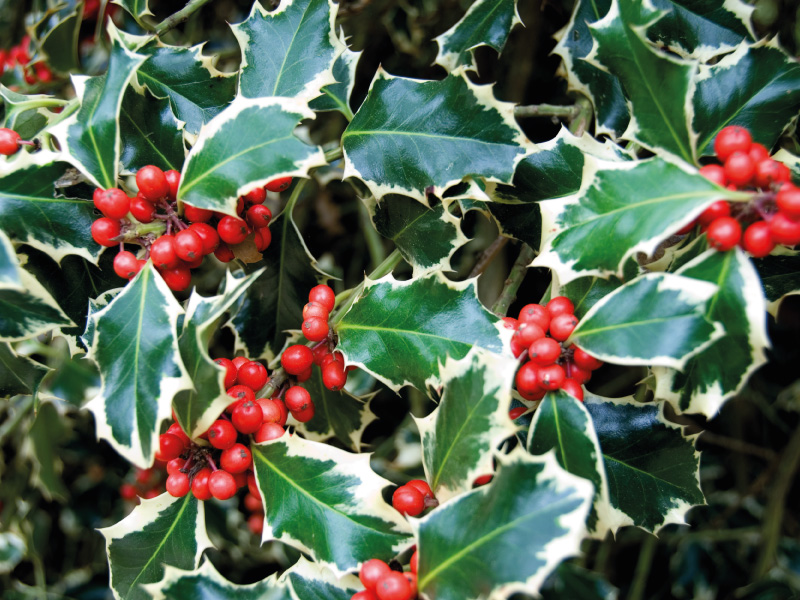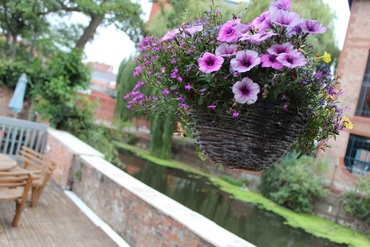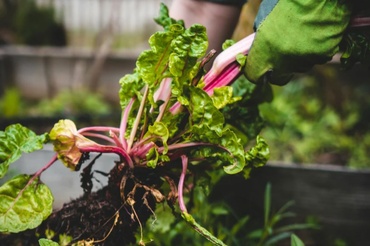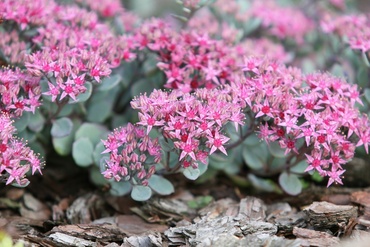Gardening by Month - November
Take stock of what worked in the garden over this year’s growing season and consider what you would like to change for next year. You can do this whatever the weather, so even if it’s rainy, stay indoors and map out a plan for your ideal garden.
November is a good month to plant shrubs. The soil is warm and should be easier to work because of all the rain we’ve had lately. This will help your shrub become established for the growing season next spring. That said, avoid planting if the ground is waterlogged.
Evergreens bring year-round foliage and structure. Variegated holly shrubs have gold or cream edge to their leaves. The bright red holly berries provide welcome food for birds and make natural Christmas decorations. Some plants have male and female varieties and it may only be the female that carries berries. You may need to grow a male form alongside to ensure the flowers are pollinated and develop berries, so ask for advice.
You can also plant fruit trees and bushes, including apple and pear trees, raspberry and blueberry bushes. We’ve had a lot of rainfall, but remember to water newly planted shrubs and keep an eye on them during dry spells.
If you’re limited on space in the garden borders, many shrubs can be planted in large patio pots. Plant them using a free-draining loam-based compost. Stand pots on terracotta 'feet' during winter to prevent drainage holes getting blocked and pots filling-up with water.
Now is also a good time to move any shrubs that you think would do better elsewhere in the garden, perhaps to give them more space or sunlight or a more sheltered position.
For instant colour, plant cyclamen and winter flowering pansies. Opt for hardy cyclamen that can better tolerate colder weather. The larger, less hardy varieties are lovely to keep indoors, where you can appreciate their gorgeous blooms.
Jobs for this month:
- Add a generous layer of mulch around the base of your outdoor plants, especially new additions, to give them a layer of protection against the cold. It also helps plants retain moisture during dry spells.
- Buy some horticultural fleece so you’re ready to wrap up any plants that don’t tolerate frost. Position potted plants close to the house where they can get more protection from the worst of the winter weather.
- Keep on tidying the garden by cutting back flowering plants and old foliage. Most flowering plants can be cut right back.
- Feed birds by keeping a feeder or bird table topped up. Their natural food sources are dwindling, so they will appreciate a regular food source. If birds don’t flock to your feeder or bird table, it might be in the wrong position for them, so experiment with locations.
Until next month, enjoy your autumnal garden.






